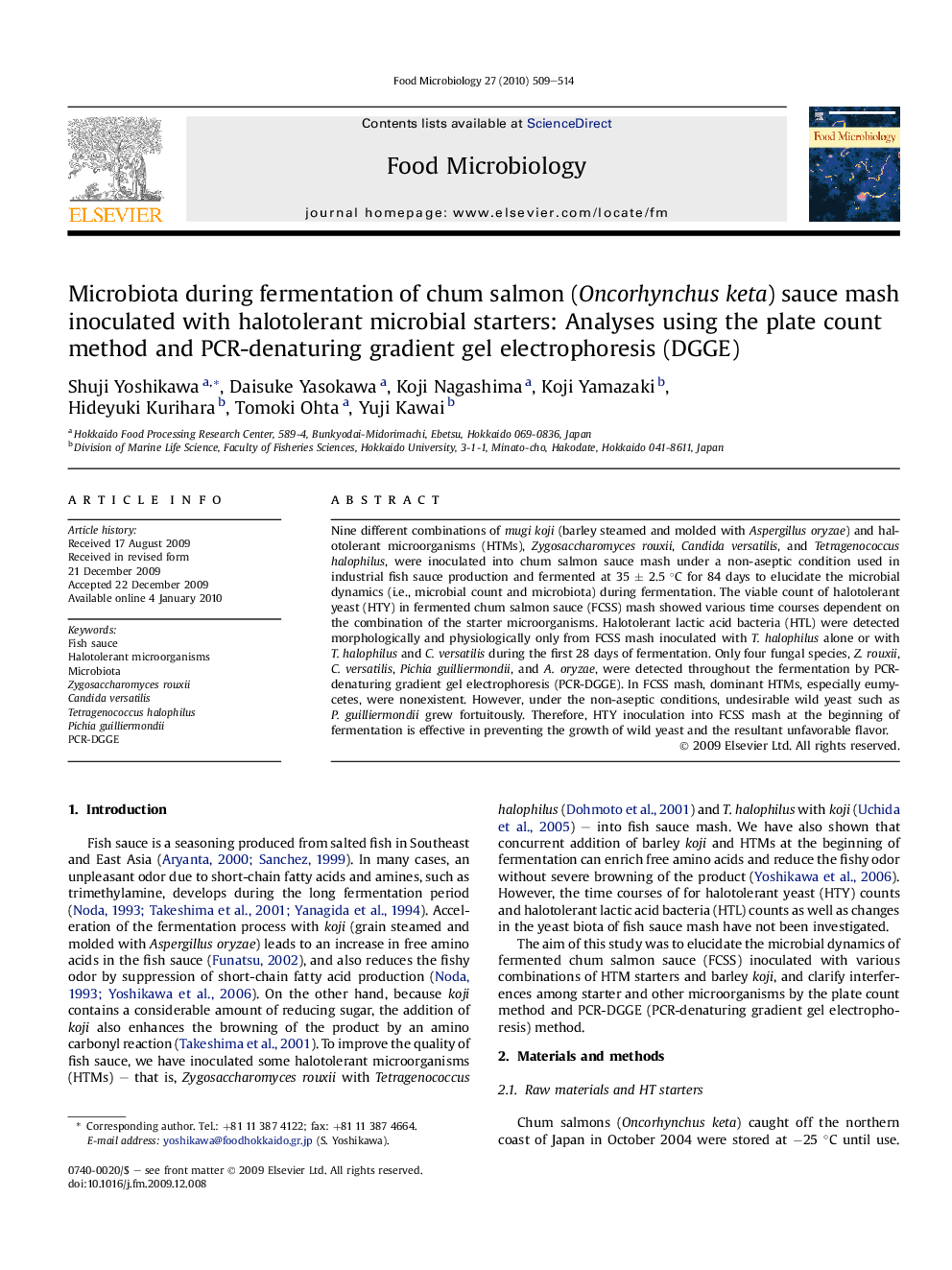| کد مقاله | کد نشریه | سال انتشار | مقاله انگلیسی | نسخه تمام متن |
|---|---|---|---|---|
| 4363326 | 1301551 | 2010 | 6 صفحه PDF | دانلود رایگان |

Nine different combinations of mugi koji (barley steamed and molded with Aspergillus oryzae) and halotolerant microorganisms (HTMs), Zygosaccharomyces rouxii, Candida versatilis, and Tetragenococcus halophilus, were inoculated into chum salmon sauce mash under a non-aseptic condition used in industrial fish sauce production and fermented at 35 ± 2.5 °C for 84 days to elucidate the microbial dynamics (i.e., microbial count and microbiota) during fermentation. The viable count of halotolerant yeast (HTY) in fermented chum salmon sauce (FCSS) mash showed various time courses dependent on the combination of the starter microorganisms. Halotolerant lactic acid bacteria (HTL) were detected morphologically and physiologically only from FCSS mash inoculated with T. halophilus alone or with T. halophilus and C. versatilis during the first 28 days of fermentation. Only four fungal species, Z. rouxii, C. versatilis, Pichia guilliermondii, and A. oryzae, were detected throughout the fermentation by PCR-denaturing gradient gel electrophoresis (PCR-DGGE). In FCSS mash, dominant HTMs, especially eumycetes, were nonexistent. However, under the non-aseptic conditions, undesirable wild yeast such as P. guilliermondii grew fortuitously. Therefore, HTY inoculation into FCSS mash at the beginning of fermentation is effective in preventing the growth of wild yeast and the resultant unfavorable flavor.
Journal: Food Microbiology - Volume 27, Issue 4, June 2010, Pages 509–514